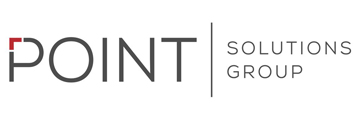CMMC Compliance and The Benefits of Working with a Certified RPO
CMMC Compliance and The Benefits of Working with a Certified RPO
The Department of Defense recently released the updated version of their Cybersecurity Maturity Model Certification (CMMC 2.0). This update is the next step in the DoD’s efforts to clarify rules and regulations for the defense industrial base – making it easier for private industry companies to supply goods and services to federal agencies. But CMMC compliance is no small undertaking. Working with a certified Registered Practitioner Organization (RPO) is the best way to get your organization compliant efficiently and cost-effectively.
If you’re a DoD prime contractor, subcontractor or sub-subcontractor, then CMMC compliance matters. A lot. It also matters if you’d like to expand your offerings to subcontract with a DoD contractor. Working on government programs, even if you’re a sub-subcontractor, requires you to meet strict security standards.
Achieving CMMC compliance will not only ensure ongoing business, it can also open doors to millions of dollars in new revenue. If you’re not going after DoD contracts directly, you might nevertheless have something great to offer people who are. And if you want in on that action, then you’ll have to be CMMC compliant, too.
What is CMMC 2.0?
CMMC 2.0 is a security framework designed to protect sensitive DoD and federal information in the hands of private industry suppliers. The CMMC standards test the security, capability and resilience of companies working in the defense industrial base.
The new CMMC 2.0 security framework streamlines the requirements, reduces assessment costs and adds flexibility to implementation. The new model also makes it easier for contractors dealing with less sensitive information to achieve a minimum level of compliance. All great news! The less great news is that aspects of the framework still leave a fair bit of room for interpretation.
How is CMMC Different from NIST Standards?
Most organizations working with highly sensitive information have been using NIST standards to guide their cybersecurity practices. If you’re already meeting NIST standards, you’re doing great!
What we’ve found, however, is that most companies trying to achieve CMMC compliance are struggling with some aspect of NIST. There are a lot of aspects to nail down, after all. NIST SP 800-171 includes more than a hundred security controls an organization has to meet.
CMMC 2.0 aligns its upper levels of security with NIST standards 800-171 and 800-172, basing the requirements on these existing frameworks. But, there’s still room for interpretation as to where your organization might fall in terms of necessary levels of compliance.
How Do I Determine the Right CMMC Compliance Level?
Obviously, if you’re a DoD contractor building fighter jets, then you’ll need to achieve level 3 “Expert” CMMC compliance. But if you’re building the tool kit to maintain the landing gear? Level 2 “Advanced” might be more appropriate.
Unfortunately, the contracts don’t always make the implications of those requirements explicitly clear. In some cases, companies required to meet Level 2 standards might need external auditing while others might be able to self-report. And that can mean a difference of tens of thousands of dollars.
Achieving maximum compliance is all well and good, but it can also be overkill. Very expensive overkill. A certified RPO can help you determine the appropriate compliance level for the work you’re doing.
What Does an RPO Do?
RPOs provide an expert team of cybersecurity professionals to assess your organization’s existing network and cybersecurity. Then, RPOs make recommendations for achieving compliance and help implement the necessary changes.
Registered Practitioners not only bring a robust background in cybersecurity, but they’ve also completed extensive, advanced training provided by the CMMC training bureau. They know what to look for in your contracts and in your systems.
A comprehensive compliance review by an RPO might yield recommendations such as:
- Implementing new technical configurations
- Creating stronger access controls
- Updating your servers and systems
- Resolving data retention issues
- Migrating information from the cloud to a secure server
- Educating user groups about necessary practices
Importantly, an RPO will help you identify where your organization needs to be on the CMMC spectrum and help you implement the necessary changes.
How Do RPOs Help with Implementation?
While most IT departments are perfectly capable of updating systems and making technical changes, any change to business processes will have an impact on the users. Many organizations struggle to identify and then manage the upstream and downstream effects of changes to systems and procedures.
Before making recommendations, an RPO will look at your business processes from start to finish. RPOs can identify potential challenges introduced by technology changes and suggest ways to address those up front – before they become a problem.
Too many organizations overlook the impact technology changes have on the people involved. More than simply flipping switches and turning on controls, achieving compliance requires educating your user base.
To maintain security compliance, users have to understand what’s required, how to do it, how to maintain it, and how to keep up with it over the long term. An RPO will help to both streamline the roll out of any changes and to educate your users on the updates. Your systems will be secure. Your processes will be efficient. And your people will know how to keep it that way for good.

